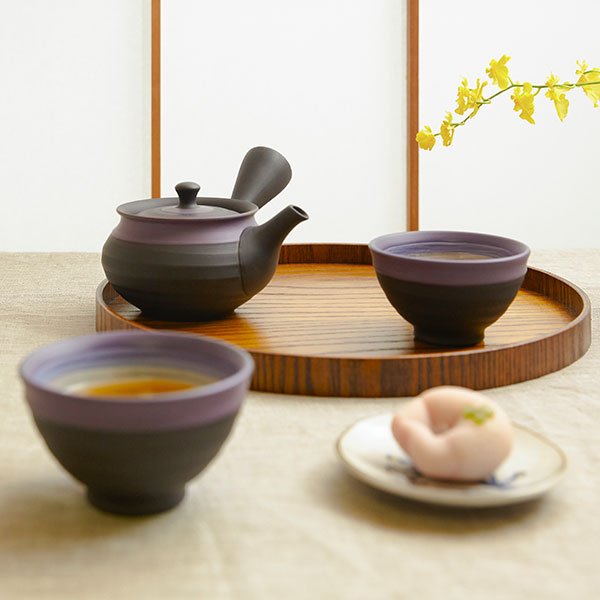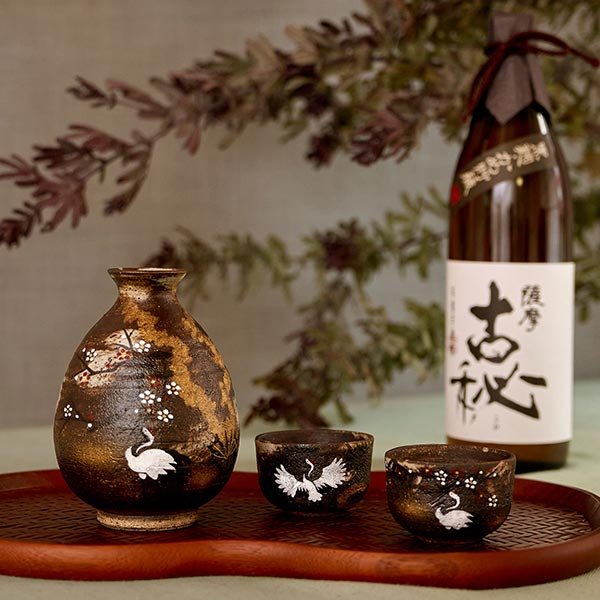5 Extraordinary Japanese Tea Bowls You Have to See
by Anna Jamieson | CRAFT
© Yoca Muta, Ebisu, Ceramic Tea Bowl
Japanese crafts people have a wonderful way of combining form and function within household items — just take this selection of stunning tea bowls, works of art in miniature. Bringing together art and design, the humble tea bowl is a prime example of the delicacy and beauty of Japanese ceramics.
Read on for some extraordinary examples of Japan’s material culture, with our selection of 5 of the most intricate and unique tea bowls around.
1. Raku
© Raku Teabowl, Yarai no Ame Wa, from the Sagawa Art Museum
Raku ware is a type of pottery that is almost synonymous with Japanese tea ceremonies, characterized by being hand-shaped rather than thrown on a wheel, and developed in the sixteenth century. This beautiful Raku tea bowl is in the Sagawa Art Museum’s collection; its decorative raised features and colours of copper, cobalt and green is typical of Raku Kichizaemon, the son of the 14th Raku master Kakunyu (1918–1980).
2. Ryoji Koie
© Ryoji Koie, Ceramic Tea Bowl
The monochrome colors of this tea bowl from 2004, by Japanese artist Ryoji Koie contribute to its textural, rugged feel; indeed, Koie uses mixed media such as clay and glass in his figurative sculptures, and the sculptural feel translates to his ceramics. Encapsulating a sense of spontaneity, you may struggle to drink your matcha tea from a piece like this — rather preferring to admire it from afar!
Centuries of unrivalled craftsmanship go into creating the pieces for the tea ceremony. Find out more about these master crafts here:
3. Makuzu Kosai
© Makuzu Kosai, Fuji, Ceramic Tea Bowl
This stunning black glazed tea bowl by Makuzu Kosai features a familiar motif in Japanese iconography: the mountain. The deliberate simplicity and elegance is what is striking with this beautiful bowl, with the ceramicist rejecting an elaborate, decorative style and choosing a monochrome palette. A beautiful example of less is more.
4. Yoca Muta
© Yoca Muta, Ebisu, Ceramic Tea Bowl
Japanese ceramics tend to feature nature heavily — but this piece by ceramic artist Yoca Muta is a particularly dramatic rendition of a whale, with beautiful additions of foamy waves, reminiscent of Katsushika Hokusai’s famous prints. The movement, drama and delicacy in this piece is extraordinary, with the white form of the tea bowl itself almost seeming to mirror the undulating ripples of the ocean itself.
The skill of Japanese ceramicists can change the way you view the art form. Read more here:
5. Kayoko Mizumoto
© Kayoko Mizumoto, Nightfall, Ceramic Bowl
Self taught porcelain artist Kayoko Mizumoto creates these beautiful kutani style pieces. Originally deriving from Kutani, now a part of Kaga, Ishikawa, Kutani ware is known for its vivid, dark colors. It’s said that the style originated from the harsh winters of the Hokuriku region, meaning people in the region desired bolder, strong colors in their ceramics. Mizumoto’s piece, with its almost patchwork-like forms, rippling patterns and oscillating hues, captures the vibrancy of the style perfectly.
Thinking about the tea bowl in a whole new way? Let us know in the comments below — we’d love to hear your thoughts!















TRAVEL | April 26, 2024